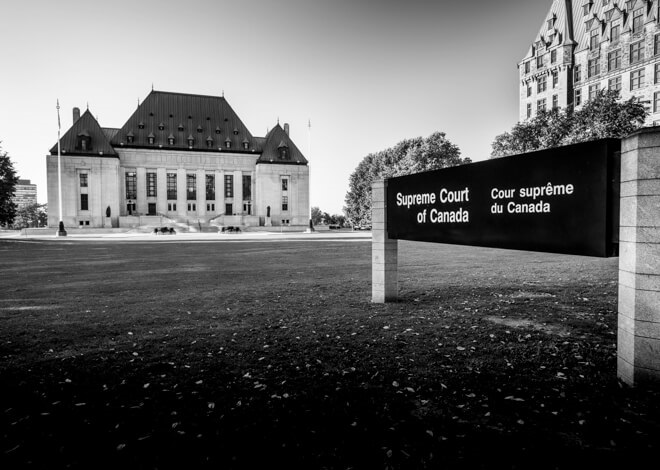Important Changes to Supreme Court Rules Coming into Effect

Marion Sandilands, David Taylor and Colin Baxter
Important changes to Supreme Court Rules coming into effect
On January 27, 2021, several significant changes pertaining to the Rules of the Supreme Court of Canada will come into effect. These rule changes will affect all litigants appearing before the Supreme Court, and it is important that parties are aware of the changes and their practical effects.
The rule changes in their entirety are published in the Canada Gazette; they are also summarized in the Supreme Court’s Notice to the Profession and guidance document. The changes affect a number of Rules.[1]
The most important changes for parties are in regard to leave applications and agents.
Leave Applications – Rules 25-31
The leave application process is now simpler and more electronically based.
All leave documents must now be filed in electronic format. The number of printed copies of leave documents has also been reduced: only two copies of the printed leave application need to be filed, instead of five (Rule 26(1)(b)). The requirements for leave applications have also been simplified and shifted toward electronic means. Leave applications no longer require an affidavit in support of the application (Rule 25(1)(d)). In the application, all lower court/tribunal reasons and judgments must be included via hyperlinks (if available) as a schedule to the notice of application (Rule 26(1)(a)). Further, the Table of Authorities in the Memorandum of Argument now requires hyperlinks not only to provisions, but to all authorities if available (Rule 25(1)(c)(vi)).
Similar changes to document requirements are reflected in Rules 27 to 31 regarding responses and replies to leave applications and leave to cross-appeal.
Rule 26(2) also provides guidance with respect to sending documents electronically in accordance with the filing changes in Rules 25(1) and 26(1). Applicants no longer need to include affidavits of service with their leave applications. Instead, the Supreme Court will now accept email delivery receipts and read receipts instead of a formal affidavit of service.
These are all welcome changes, which should result in cost savings for parties.
Agents – Rule 16
One of the most significant changes comes to Rule 16: litigants are no longer required to use local agents for Supreme Court appeals.
Although not required, agents are still permitted. This means that agents can be used if a party feels that they would benefit from an agent’s expertise and guidance. Agents take away the guesswork in navigating the unique Supreme Court procedures. Agents can provide information on intricate rules, as well as general advice, precedents, and templates. Agents can also provide substantive and strategic input on submissions. Finally, agents can put the final polish on submissions and ensure that they comply with all Supreme Court rules and document requirements. Agents also have contacts at the Registry Office and bring a helpful, knowledgeable perspective when advising clients.
Concluding remarks
In light of these sweeping changes, the process for leave applications at the Supreme Court has now been simplified. Electronic documents are now preferred, and the overall process now allows for smoother file compilation. These changes add to the current Supreme Court COVID-19 directive.
The latest Supreme Court document preparation guidelines provide more information pertaining to the changes.
As a boutique litigation firm situated in the Nation’s Capital, Conway Baxter Wilson LLP/s.r.l. continues to pride itself in advising on Supreme Court matters. For more information, contact Marion Sandilands, David Taylor, or Colin Baxter.
[1] Changes will apply to Rules 16, 25 to 31, 33, 38, 49, 52, 54, 73, 79 and 81.
